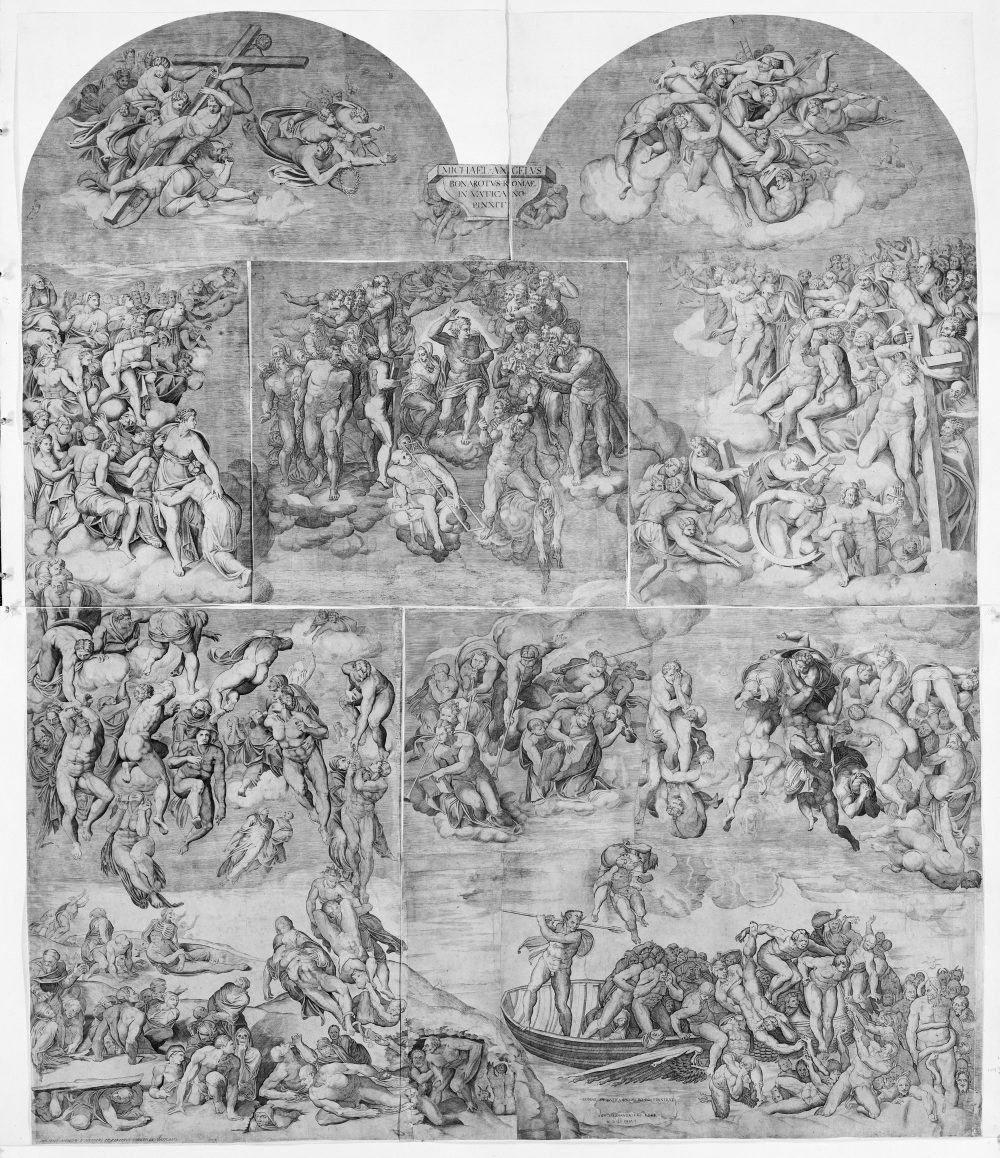
Metropolitan Museum of Art, New York, www.metmuseum.org
In this section of the dialogue, the participants discuss the depiction of the battle between the angels and demons over the blessed and damned souls in the “Last Judgement”.
“M. Ruggiero replied: ‘[…] There is in my opinion another area where is something equally derisory, and this is that angels fight against the damned who are attempting to climb up to the region of the blessed; they deal out great blows in order to force them back down. On the other side devils appear to be struggling to prevent the flight of the blessed up into the heavens, and for that reason we see a great fight between angels and devils; to gain possession of one man, devils have sized his hair to pull him down into the abyss while angels have hauled of his feet to pull him up to heaven, as though the fate of this man depended on who wins him by force. Tell me if you (don’t) think this is ridiculous, I leave it to your judgment’.
M. Vincenzo said: ‘I think it was done to show how evil spirits are always tempting us and battling with us, and how we are defended by angels’.
M. Ruggiero said: ‘Even if that were true, this is not the place to show these things. For on that day Lucifer’s realm will be fully prepared and it will only remain for him to be condemned to the eternal flames with the rest of his followers. As a result, all temptation will cease and there will be no need to come to blows, because the mere presence an Angel and any of the blessed will be enough to make their adversaries flee. In addition, the evil spirits will know who is damned and who is saved, and knowing that, they will not be tempted to think of winning them in a fight. Apart from not being capable of doing it, they would not have the courage. Therefore, Horace was right when he said:
«In ancient times it was wisdom to separate private from public and profane things from sacred»
Although this precept was intended for poets, it is also appropriate for painters, who have to separate the true from the false and not confuse the two’.”
“Rispose M. Ruggiero: ‘[…] A quelli un altro ne segue, a mio giudizio, non men degno di riso ch’el sopra detto, e questo è che gli angeli s’oppongono ai reprobi che tentano sallire al luogo d’i beati, e gli danno di gran punzoni per farli ritornare a basso. Da l’altra banda i demoni par che si sforzino impedire il volo ai beati, che non vadano al cielo, però si vede qua una gran baruffa fra gli angeli et i diavoli: per guadagnarsi uno, questi l’hanno preso per i capelli per tirarlo al baratro, e quelli per i piedi per tirarlo al cielo, come il fatto di colui stesse in arbitrio di chi a forza se lo guadagna. Se questa è salata, ditelo voi, ch’io la rimetto al vostro giudizio’.
Disse M. Vincenso: ‘Penso che ciò fatto sia per mostrare le tentazioni e le battaglie che i maligni spiriti ne fanno sempre, e la difensione che dagli angeli abbiamo’.
Disse M. Ruggiero: ‘Ancor che ciò vero fusse, non è quello il luogo da dimostrarle: conciossia che in quel giorno sarà fornito il prencipato di Lucifero, e resterà solo da esser condennato a le fiamme eterne con tutti i suoi seguaci, e per ciò ogni tentazione sarà consumata, e non sarà bisogno che vengano a le mani, perché a la sola presenza de l’angelo e d’ogni beato anco tutti gli avversarii fuggirebbono. Oltra ciò, i maligni spiriti saperanno chi è dannato e chi è salvo, e, sapendolo, non tenterebbono di volerli a la lotta guadagnare; perché, oltre che non potrebbono, nonarebbono ardimento di farlo. Però ben diceva Orazio:
«Fu sapïenza ne l’antica etade
Di seperar dal publico il privato
E da le sacre le profane cose ».
Benché questo precetto sia dato al poeta, conviene anco al pittore, a cui appertiene di seperar le cose vere da le falze e non le confondere insieme, perché, se vogliamo rettamente considerare, il fatto de le corone e de le funi, che poch’è vi dissi, troveremo che dimostra più tosto non so che di disprezzo de la religione che di onore, conciossia che non sono quelle la principal cagione de la nostra salute, ma il Signore’.”
Gilio 2018, 175, n.259, fig. 19-22



